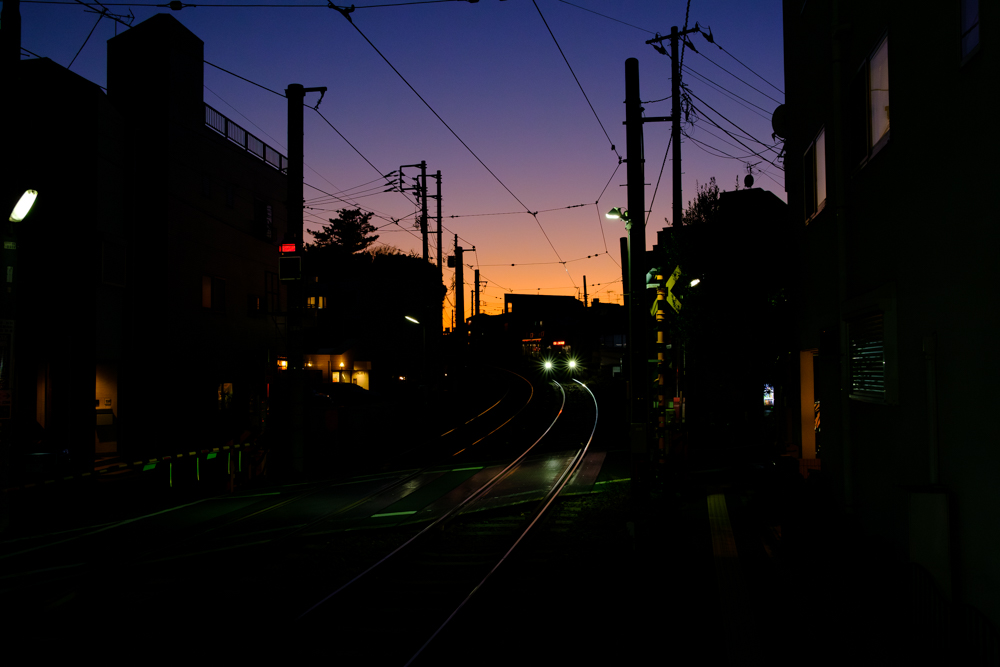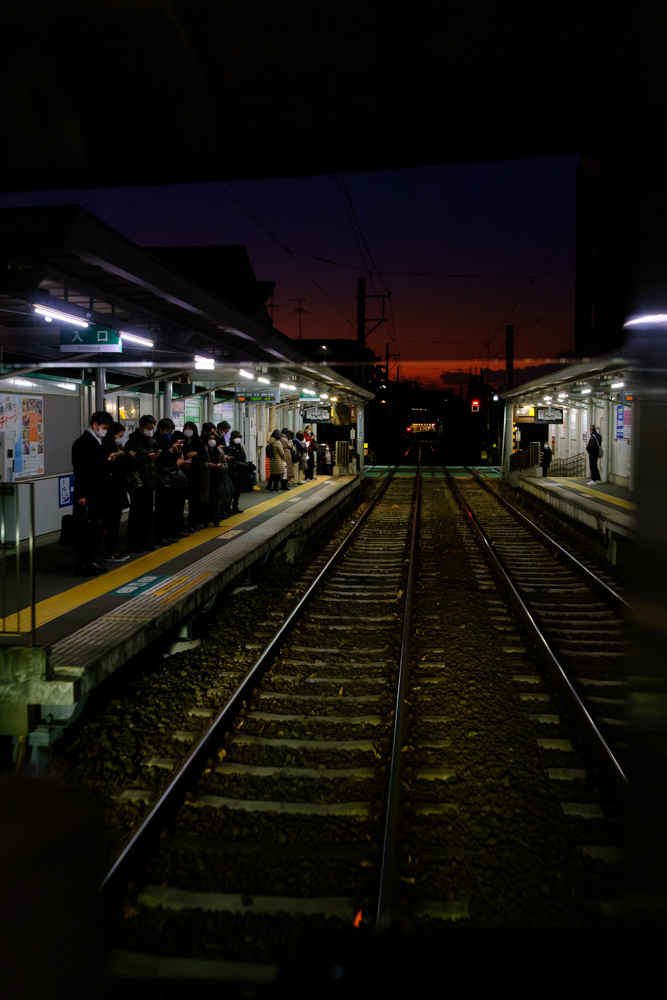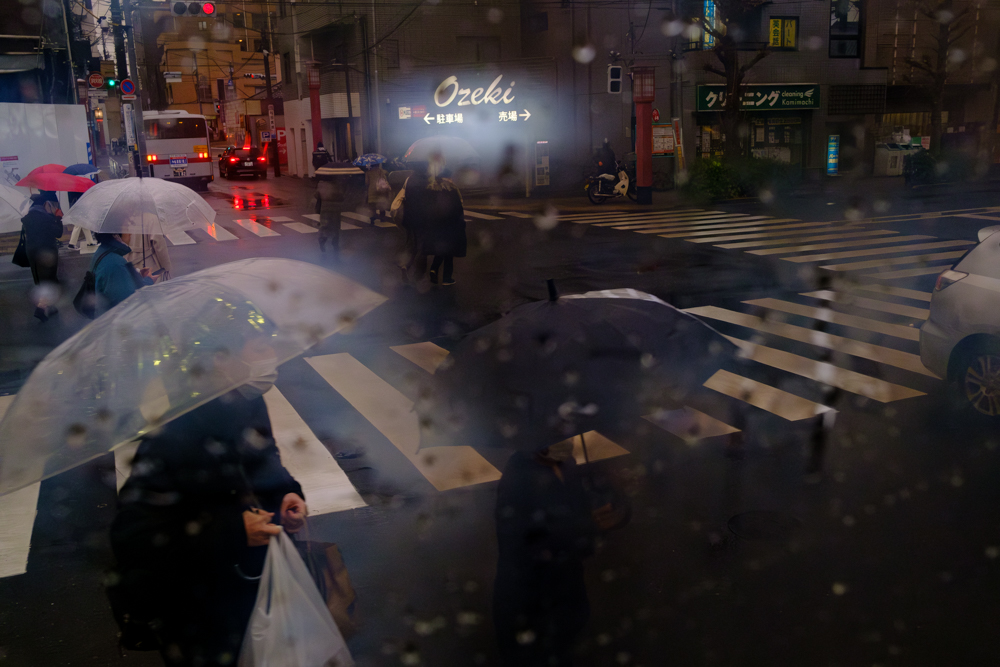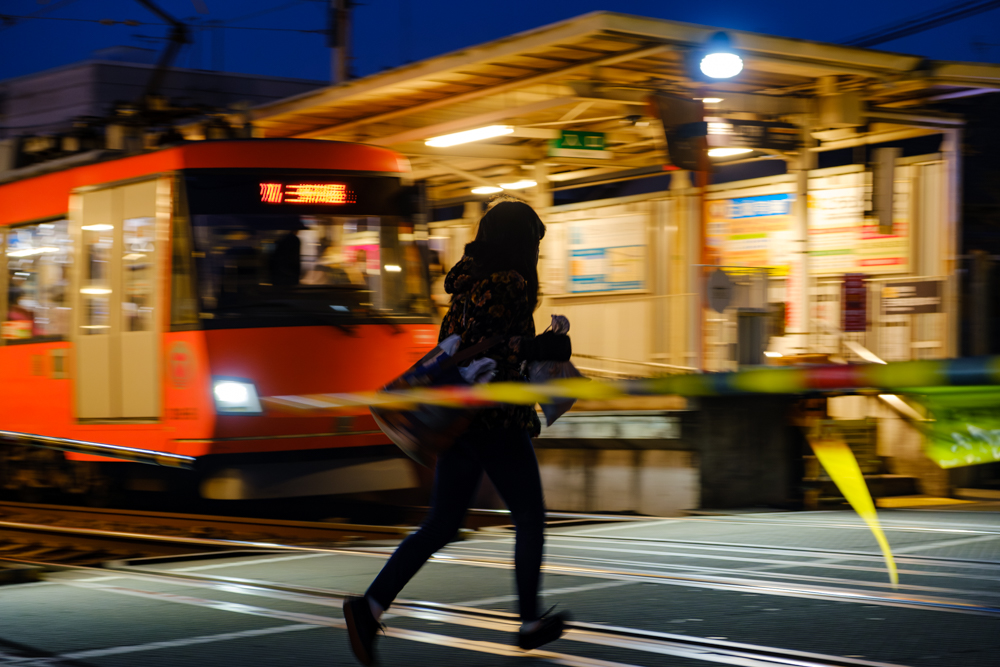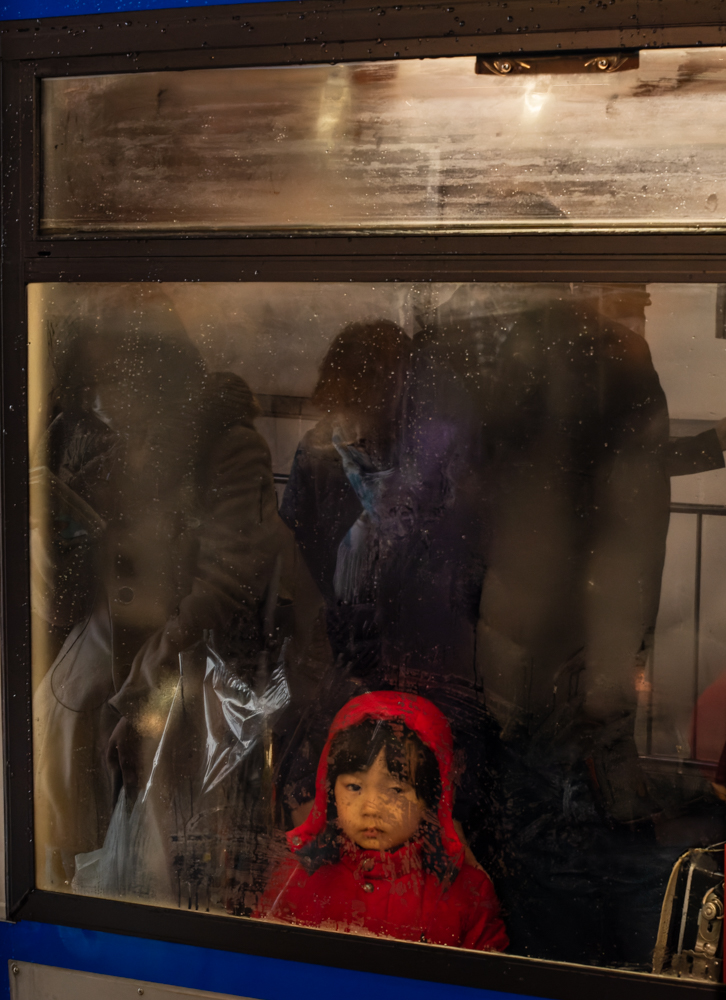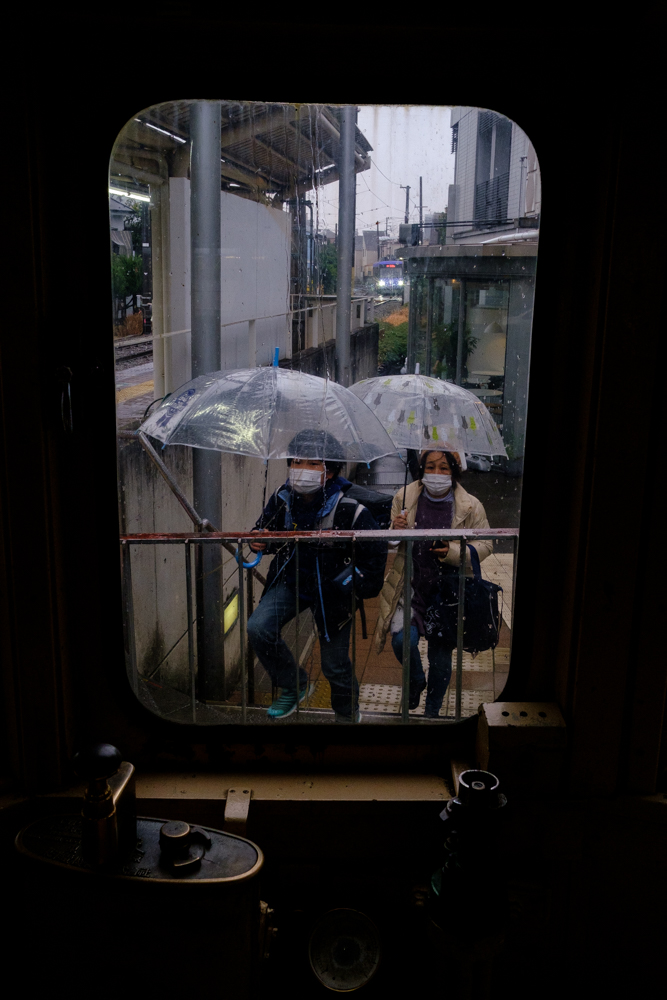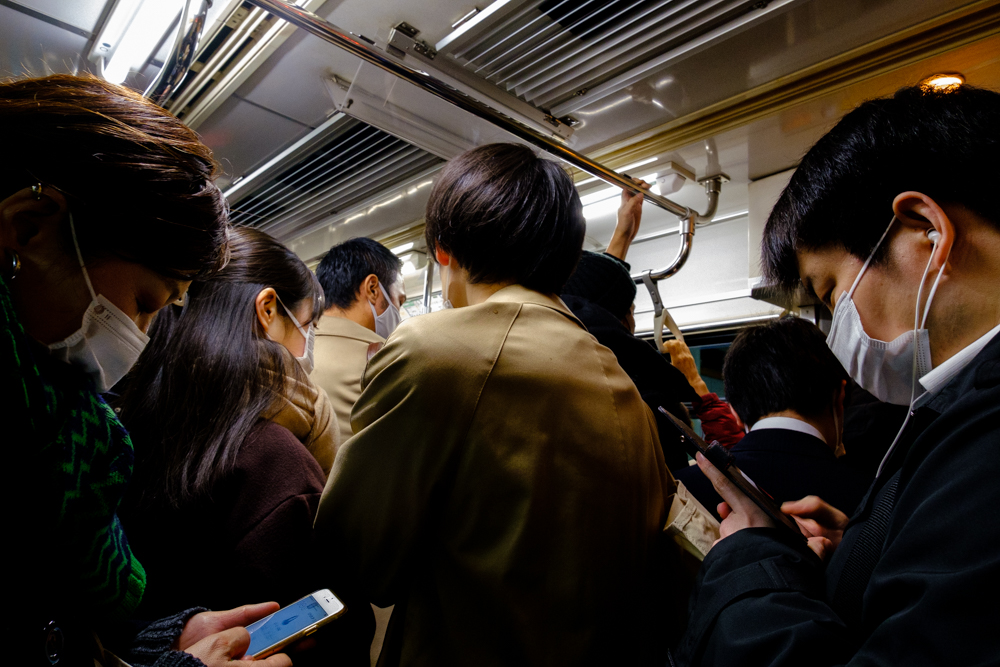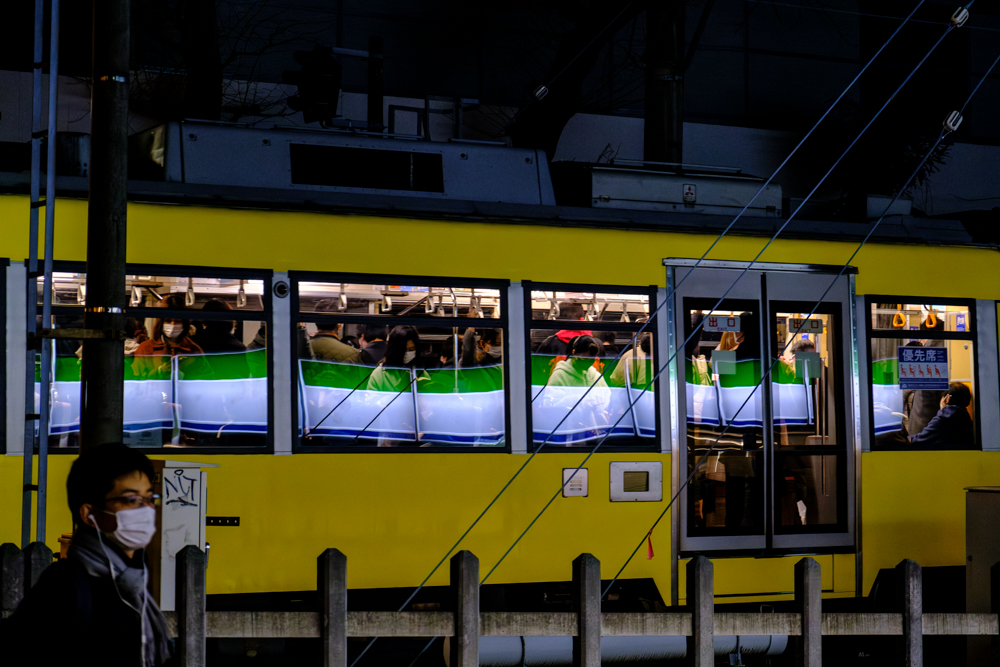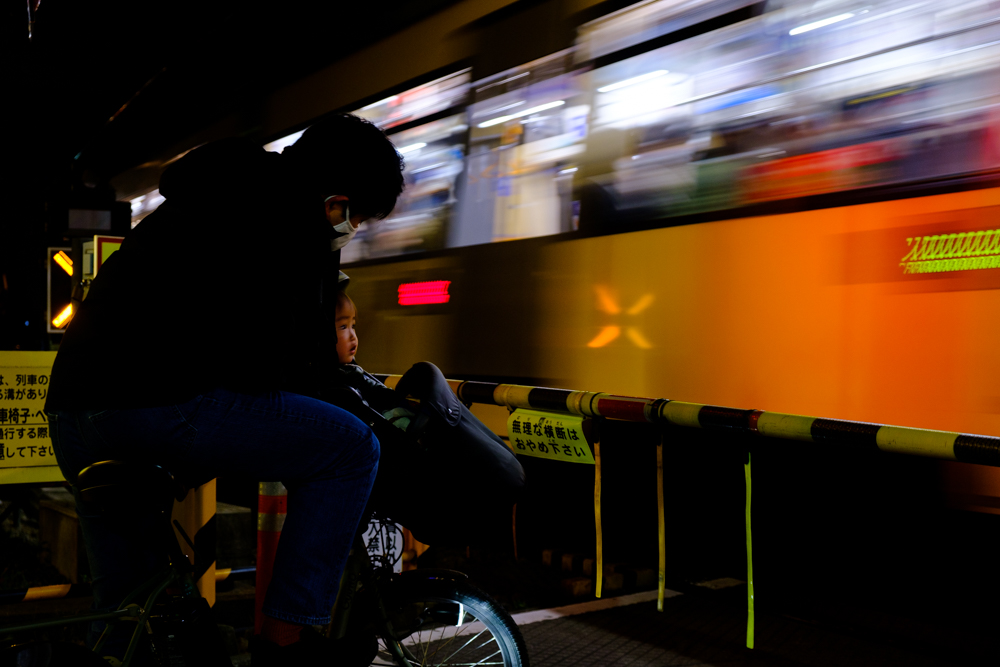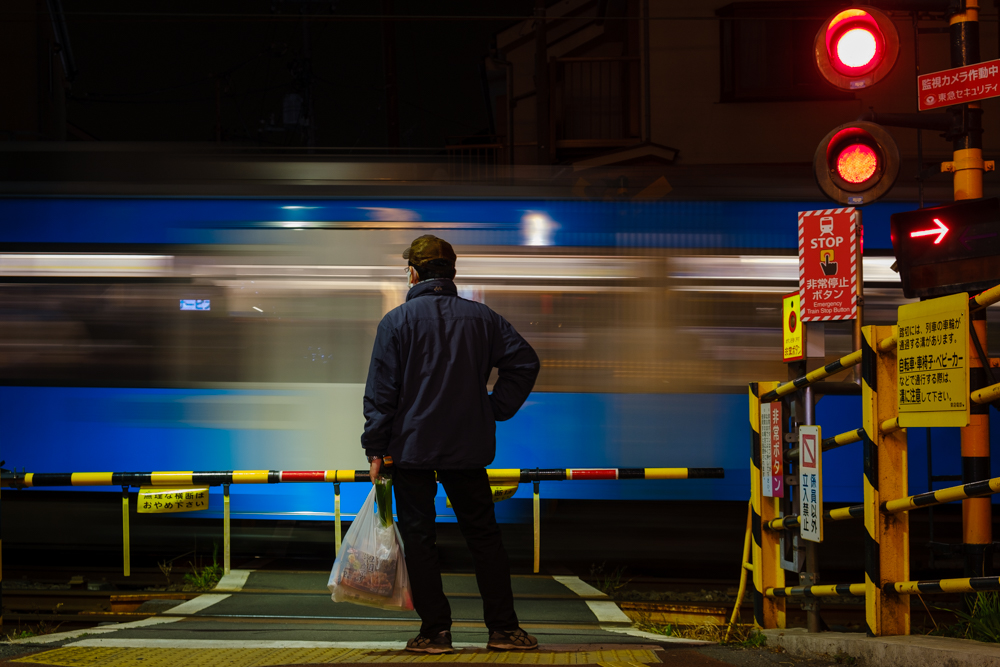Dark Train: The Setagaya Sen | ダークトレイン 世田谷線に乗って
Now a 2023 Critical Mass Finalist!
I boarded the tram amid hushed silence. No one made eye contact as they peered at their phones from behind their masks. Not a word was uttered and nary a cough heard for fear of the look of disdain that would be forthcoming. It was January 2021, precisely one year since Covid-19 arrived in Japan.
I was a resident of Setagaya, the primarily residential, most populous of the 23 wards of Tokyo. Some neighborhoods are serviced only by the Setagaya Sen, a two-car, street-level tram with ten stops spread out across just five kilometers. The line runs between densely packed houses, schools, temples, shopping streets, and cemeteries. It is one of Tokyo’s last community trams, as opposed to the much more famous commuter trains we tend to associate with Japan. Instead of being packed with men in suits, the Setagaya Sen serves a mix of passengers from grandparents to grocery shoppers, kids going to and from school, and of course, a few businessmen who use the tram to connect to the major commuter trains bound for Central Tokyo.
Every six minutes, like a slithering, steel snake winding between houses, the train arrives to pick up passengers from elevated platforms that at night resemble small, dotted islands on dark seas. There are dozens of crossings along the way and each time a train approaches, the distant bells of warning can be heard coming closer. At every crossing, masked people wait for the train to pass and for the pandemic to pass. Every once in a while, someone can wait no longer and risks racing across the tracks even when the safety bars are in place. Eyebrows are raised; rules are not broken in Japan.
I was suffering from long-Covid, and with nowhere to go for work, I began to take the Setagaya Sen at night. I sought no destination, but instead the camaraderie of the hollow, dark eyes of my fellow passengers. What would the next station bring? Would the vaccine arrive first, or would death? Whatever the answer, the Setagaya Sen would rumble on through the night.
2023年度Critical Mass ファイナリストとして選定されました!
私は静寂に包まれた路面電車に乗り込んだ。搭乗者は皆マスクの上から携帯電話を覗き込みながら、他の誰とも目を合わせない。非難の目で見られることを恐れて一言も発せず、咳払いもしなかった。当時は2021年1月、新型コロナウィルスが来日してからちょうど1年が経っていた。
私は世田谷区に住んでいた。世田谷線は2両編成の路面電車で、わずか5キロの間に10の停留所がある。この路線は、密集した住宅、学校、寺院、商店街や墓地などの間を走っている。この路面電車は東京最後のコミュニティ電車のひとつである。世田谷線はスーツ姿の男性で満員なのではなく、お爺ちゃんお婆ちゃんや食料品の買い物客、登下校中の子供たち、そして、都心へ向かうために三軒茶屋で通勤電車に乗り換えをするビジネスマンまで、さまざまな乗客が利用している。
6分おきに、家々の間を縫うように鉄の蛇のような電車が、夜には暗い海に点在する小さな島のような高架ホームから乗客を迎えにやってくる。途中には何十もの踏切があり、列車が来るたびに、踏切警報機の音が次々と近づいてくるのが聞こえる。どの踏切でも、マスクをした人々が列車が通過するのを、そしてパンデミックが過ぎ去るのを待つ。時折、待ちきれなくなり、安全バーが設置されているにもかかわらず、危険を冒して線路を横断する者がいる。ルールを破らない我国では珍しい光景だ。
私はコロナの後遺症に悩まされ、自粛の世の中で仕事で行く場もなく、夜の世田谷線に乗るようになった。私が求めたのは目的地ではなく、同乗者のうつろで暗い瞳の仲間意識だった。
次の駅では何が待っているのだろう?ワクチンが先か、それとも死が先か。答えがどうであれ、世田谷線は夜通し走り続けた。
